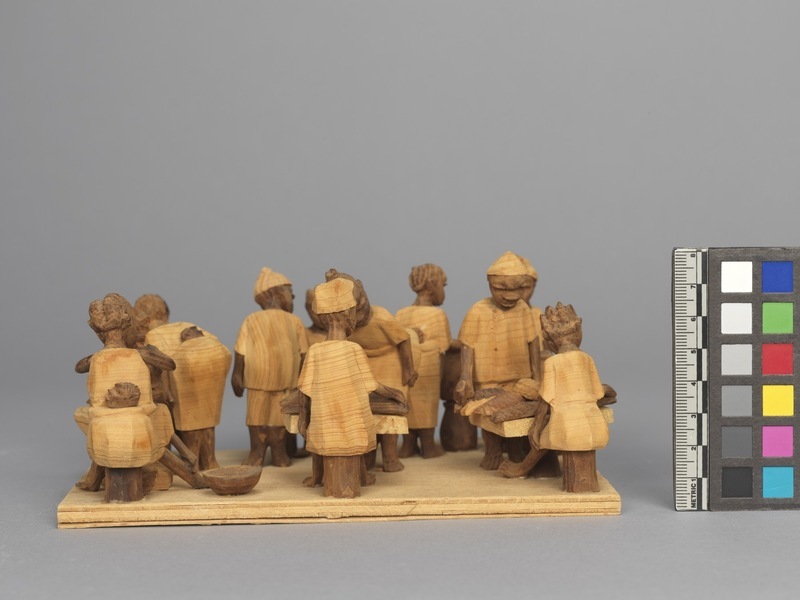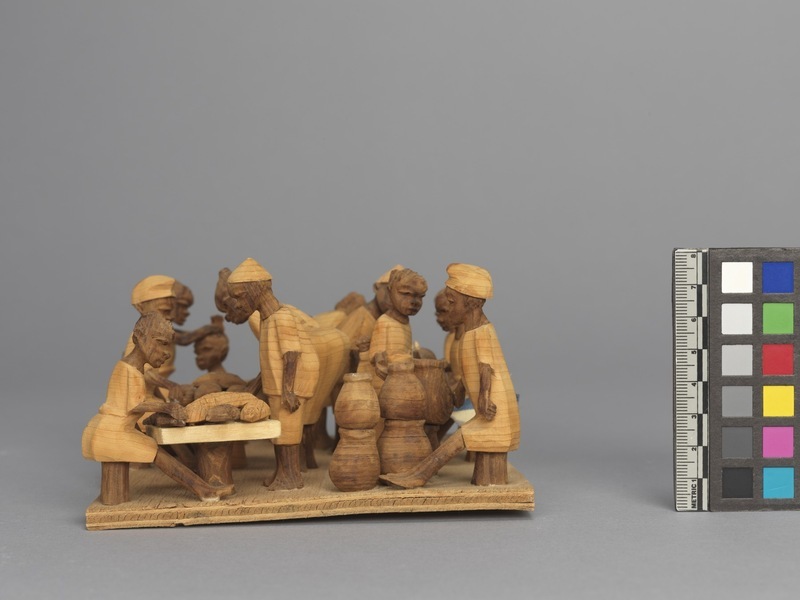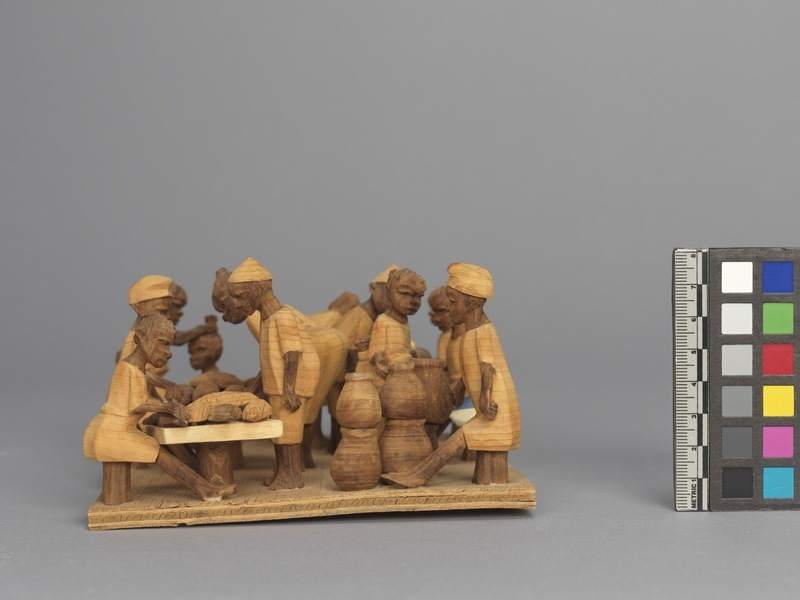Thorn Carving Item Number: 3446/4 from the MOA: University of British Columbia





Description
Thorn carving depicting a group of people at a market. Figures adhered to rectangular particle board base. Figures are wearing various outfits including dresses, hats, pants, skirts and short sleeved shirts. Four women have babies strapped to their waists. There are two rows of three tables in the scene, each with a vendor and customer. All vendors are sitting on cylindrical stools. Three vendors are selling food, one is selling pottery, one is selling textiles and one is selling(?) combs. The textile vendor has a sewing machine and is in the process of making a white and blue striped cotton cloth. The comb vendor(?) is brushing the hair of a kneeling figure. There is a small bowl to the right of them. Base, figure outfits, five vendor tables tops and half of the food are light yellow-brown. Figures, stools, pots, sewing machine, one table top, all table bases, combs, bowl and half of food are dark brown. Donor initials on base.
History Of Use
Thorn carvings are miniatures depicting a variety of scenes from Nigerian life. The carvings first began to be made circa 1930. The thorns vary in size; they can be as large as 12.7 cm long and 9.6 cm wide. The thorn wood is comparatively soft and easy to carve; they are traditionally carved by men.
Narrative
Acquired in Nigeria during the years 1975-76, when the donor’s father was teaching at the Benin Technical College, in Benin City, Nigeria. The whole family was there for two years, while his father worked under the auspices of the Canadian International Development Agency (CIDA).
Cultural Context
craft; tourist art
Specific Techniques
The light yellow-brown thorn and the dark brown thorn come from the ata tree; the light red-brown thorn comes from egun trees. The parts are glued together with viscous paste made that was made from rice cooked with water.
Item History
- Made in Ibadan, Nigeria ? during 1975
- Collected in Nigeria between 1975 and 1976
- Owned by Eric Sadee before September 17, 2020
- Received from Eric Sadee (Donor) on September 17, 2020
What
- Name
- Thorn Carving
- Identification Number
- 3446/4
- Type of Item
- carving
- Material
- atum thorn, egun thorn, wood, adhesive and cotton fibre
- Overall
- height 8.0 cm, width 17.5 cm, depth 14.0 cm
Who
- Culture
- Yoruba
- Previous Owner
- Eric Sadee
- Received from
- Eric Sadee (Donor)
Where
- Holding Institution
- MOA: University of British Columbia
- Made in
- Ibadan, Nigeria ?
- Collected in
- Nigeria
When
- Creation Date
- during 1975
- Collection Date
- between 1975 and 1976
- Ownership Date
- before September 17, 2020
- Acquisition Date
- on September 17, 2020
Other
- Item Classes
- carvings & sculpture
- Condition
- good
- Accession Number
- 3446/0004